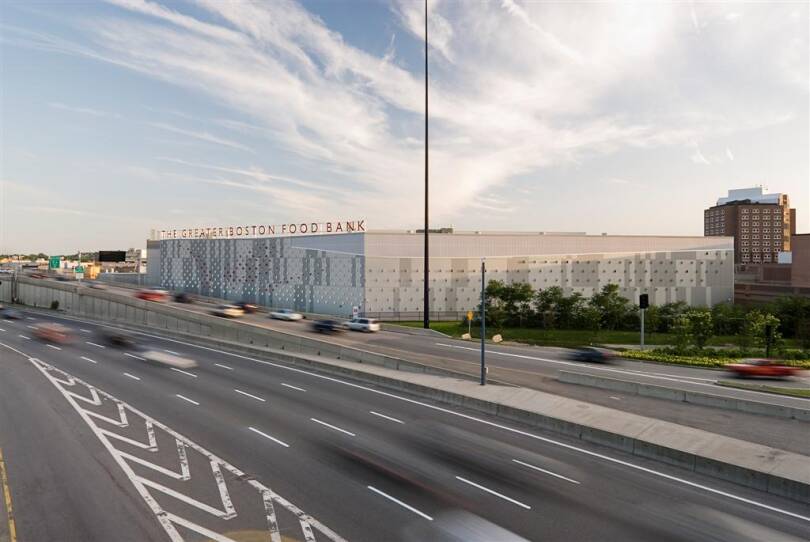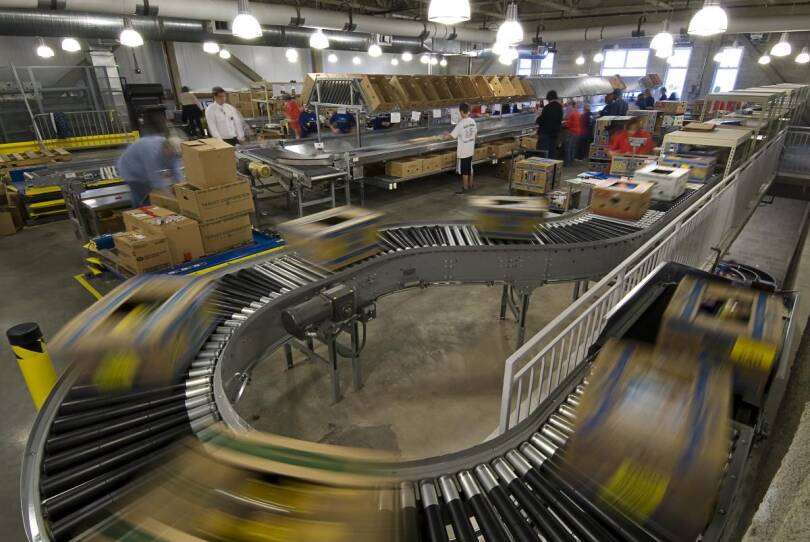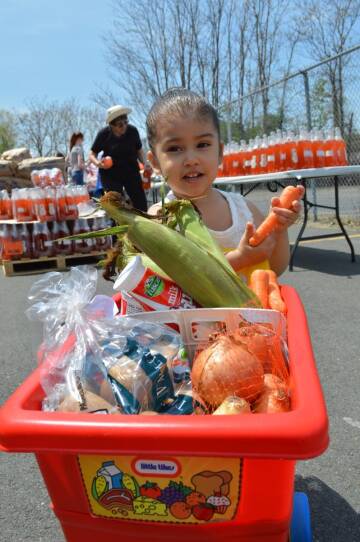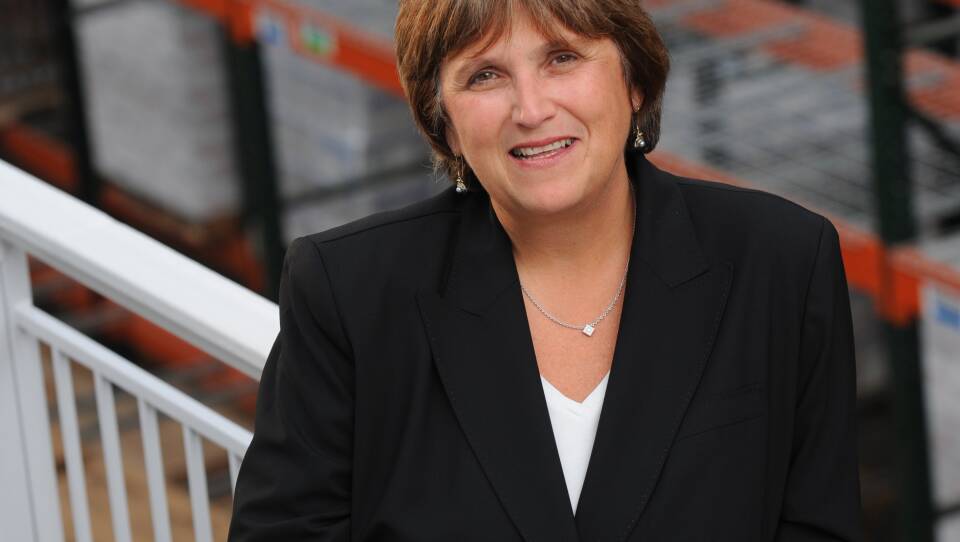If you have the good fortune of knowing where your next meal is coming from, it’s hard to wrap your mind around the fact that one in nine people in eastern Massachusetts struggle with hunger. Catherine D’Amato, the president and CEO of The Greater Boston Food Bank (GBFB), wants you to know that hunger is a problem that can be solved. The organization she's led since 1995 is an important part of the solution. She starts by explaining what her organization is, and what it isn’t.
“We are the supply channel from farm to table,” she says. “Think of us as the wholesaler to the hungry.” The role that GBFB plays is different than that of a neighborhood social service agency or faith-based organization, where individuals pick up a bag of groceries. Those are food pantries. A food bank is different. “We are the supplier to the pantries,” she clarifies. Her organization’s job is to procure, transport, store, and redistribute food to people who need it most.

Last year, the organization acquired and distributed 54 million pounds of food, enough to provide healthy meals to more than 500,000 people. The food bank works with 550 agency partners in 190 cities and towns from Cape Ann to Cape Cod and the Islands. The food that it handles come from a wide variety of places. Some products are donated by retailers, wholesalers, and manufacturers. Surplus commodities from the U.S. Department of Agriculture (USDA) are also part of the mix, as well as items collected through food drives. To ensure that people have access to fresh fruits and vegetables, the food bank utilizes funds from the Massachusetts Emergency Food Assistance Program (MEFAP) to purchase produce from local farmers through the Mass Grown Initiative(MGI).
The hub of this operation — impressive both in scale and orchestration — is located at the Yawkey Distribution Center, a 117,000 square-foot facility located in the Newmarket section of Boston (between the southern edge of the South End and north of Dorchester’s Upham’s Corner). The visually striking building is easily seen from I-93. People often remark at the sheer size of the facility. It speaks to the widespread reality of hunger and food insecurity in the region.

D’Amato estimates that 90,000 people eat something from the food bank every week. About half are children and seniors. A recent study found that more than 8 percent of the population of eastern Massachusetts uses a food pantry, soup kitchen, or shelter. When the economic downturn occurred in 2008, GBFB and its partners saw a 21 percent increase in requests for food assistance. While economic circumstances have improved for some, the demand has remained steady. “We have not seen less demand,” she says. “[The rate] went up and then stayed. It didn’t drop from one in nine people to, say, one in 15.”
Asked how eastern Massachusetts compares with other parts of the country, D’Amato talks about a mixed picture. While our region has more access to federal and state resource streams, and is more food-secure than many southern states, the high cost of living in eastern Massachusetts forces individuals of limited means to make difficult choices. Dollars that would normally be spent on food go toward rent, gas, heating, and health care expenses. While the economy is more stable now than when the financial crisis first hit, not everyone has recovered. Many are still under-employed. “There is a broader gap between people who have the resources and people who don’t have the resources,” she observes.
The good news is that there are multiple ways to help. Last year, about 26,000 people volunteered for the organization, participating in activities like sorting and packing food at the warehouse and conducting food drives. Donors like the fact that 91 cents of every dollar goes to hunger relief, including GBFB initiatives like the Mobile Market program, whereby the organization transports and sets up farmer's market-style events at a variety of sites, including those serving veterans and participants in WIC, a supplemental nutrition program for mothers and their children.

When you ask D’Amato what laid the foundation for her work fighting hunger, she’ll tell you about growing up in Redding, California, and the generosity of her Italian immigrant father. After driving a bread truck for years, he opened a restaurant bearing the family name. She was eight years old at the time. “People would come to the door, looking for dishwashing jobs or something they could do,” she says. Many were homeless, and expected to be put to work in exchange for something to eat. Her father would feed them whether or not he had a job for them. The lesson, she says, was that people should not have to work in exchange for food. For her, letting anyone go hungry is simply wrong.
D’Amato loves to recognize what is going very right in the greater Boston food scene. She is deeply appreciative of local chefs who support the organization’s work. Recently, chef Jody Adams, together with Jonathan Mendez and Eric Papachristos, opened Saloniki, a Greek sandwich shop near Fenway. The team donated the proceeds of their soft opening to GBFB. That is just one of many examples demonstrating a spirit of generosity here in the greater Boston area.
“Everyone has a role to play in ending hunger,” D’Amato says. “The goal is to build a healthy, strong community where families have a better chance at raising children who can grow up and contribute to the community.”
Visit GBFB.org to learn how you can help end hunger in our region. The Greater Boston Food Bank is located at 70 South Bay Ave., Boston, 617-427-5200.




